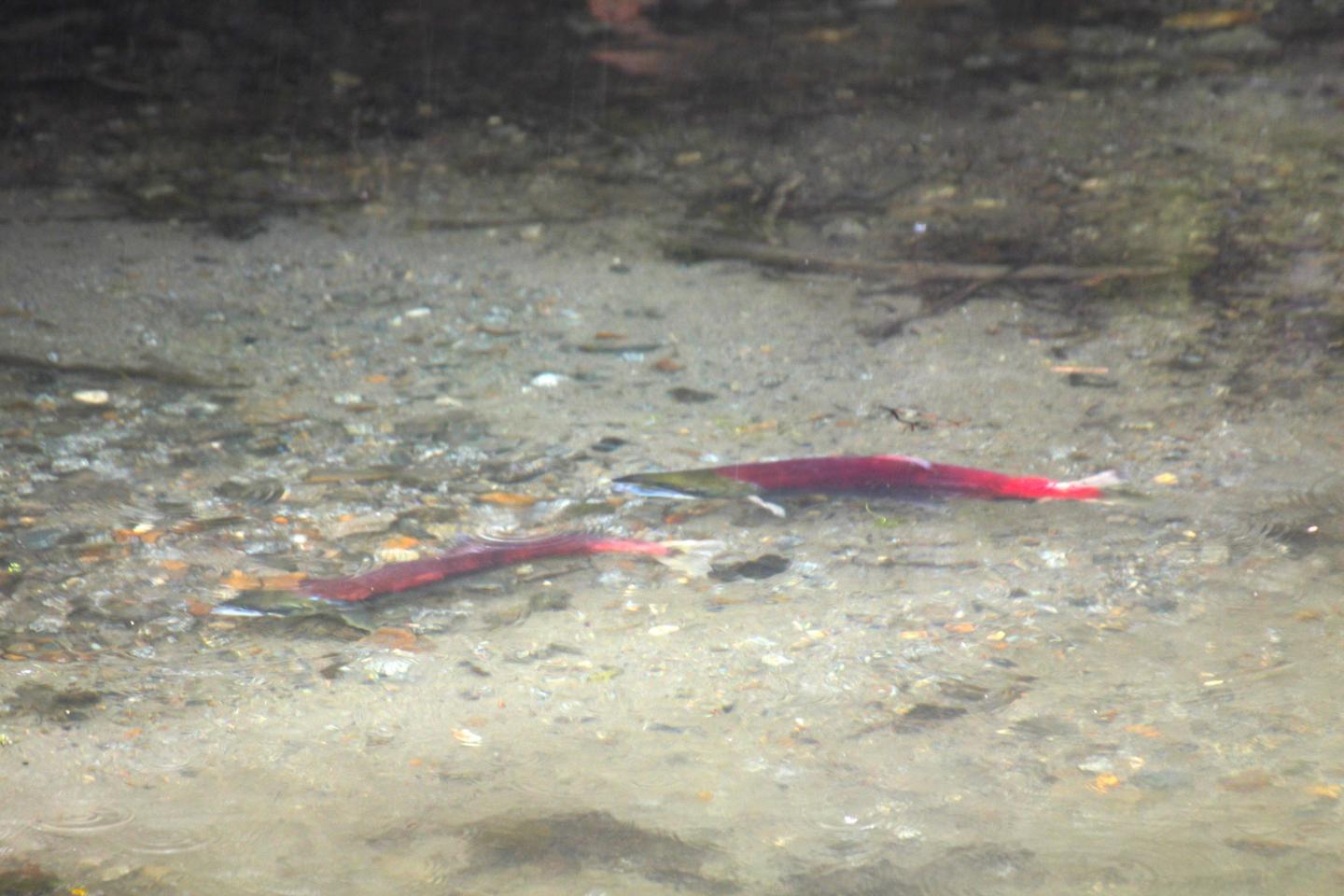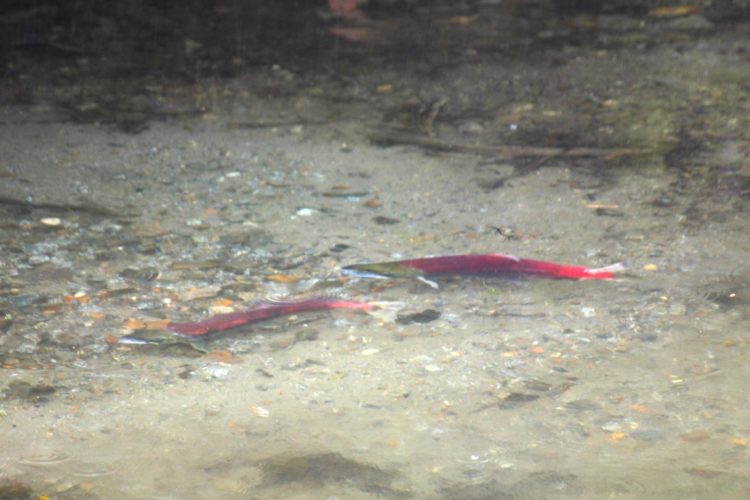Value of these ‘forest fishes’ from Tongass, Chugach National Forests exceeds $80 million

Credit: Ali Freibott, US Forest Service
Alaska’s Tongass and Chugach National Forests, which contain some of the world’s largest remaining tracts of intact temperate rainforest, contribute an average of 48 million salmon a year to the state’s commercial fishing industry, a new USDA Forest Service-led study has found. The average value of these “forest fish” when they are brought back to the dock is estimated at $88 million per year.
Led by the Forest Service’s Pacific Northwest Research Station, the study used Alaska Department of Fish and Game data and fish estimates from 2007 to 2016 to quantify the number and value of Pacific salmon originating from streams, rivers, and lakes on the Tongass and Chugach, which are, respectively, the largest and second-largest national forests in the country. The study focused on five commercially important salmon species–Chinook, coho, sockeye, pink, and chum–caught primarily in four commercial salmon management areas adjacent to these two forests.
“Pacific salmon fisheries are absolutely central to Alaska’s economy and culture,” said Adelaide Johnson, a Juneau-based hydrologist with the Pacific Northwest Research Station and the study lead. “We suspected that many of the ocean-caught Pacific salmon that support the fishing industry likely began their lives in forest streams that drain the Tongass and Chugach National Forests.”
Johnson and Forest Service colleagues Ryan Bellmore and Ronald Mendel, and Alaska Department of Fish and Game’s Stormy Haught, used a three-step process to determine the number of fish originating from the Tongass and Chugach. First, they calculated the total number of salmon caught in regional commercial harvest areas. They then subtracted the number of salmon originating from hatcheries–a process facilitated by the hatchery practice of marking juvenile fish–and the number of salmon that originated outside national forest boundaries, such as commercially caught fish that were born in Canadian rivers and rivers farther south in the contiguous United States.
“Our findings underscore just how important Alaska’s forest rivers and lakes are for sustaining salmon,” said Bellmore, who also is based in Juneau. “At the same time, this study vastly underestimates the value of salmon because it does not include subsistence and recreational salmon fisheries, which are critically important to local communities and the regional economy.”
The authors note that even salmon that do not originate from the Chugach and Tongass may still be supported by these forests for a portion of their lives. Pacific salmon fry, for example, that emerge upstream of national forest lands will migrate downstream and may use rivers, lakes, and estuaries within national forest boundaries for rearing.
Additional research is needed to clarify all of the pathways by which these national forests support productive fisheries. Nevertheless, this study can contribute to discussions about alternative land management strategies that might affect salmon populations and associated commercial salmon fisheries, Johnson said.
The USDA Forest Service’s Pacific Northwest Research Station–headquartered in Portland, Ore.–generates and communicates scientific knowledge that helps people make informed choices about natural resources and the environment. The station has 11 laboratories and centers located in Alaska, Washington, and Oregon and about 300 employees. Learn more online at https:/
###
Media Contact
Yasmeen Sands
[email protected]
503-808-2137
Related Journal Article
http://dx.





